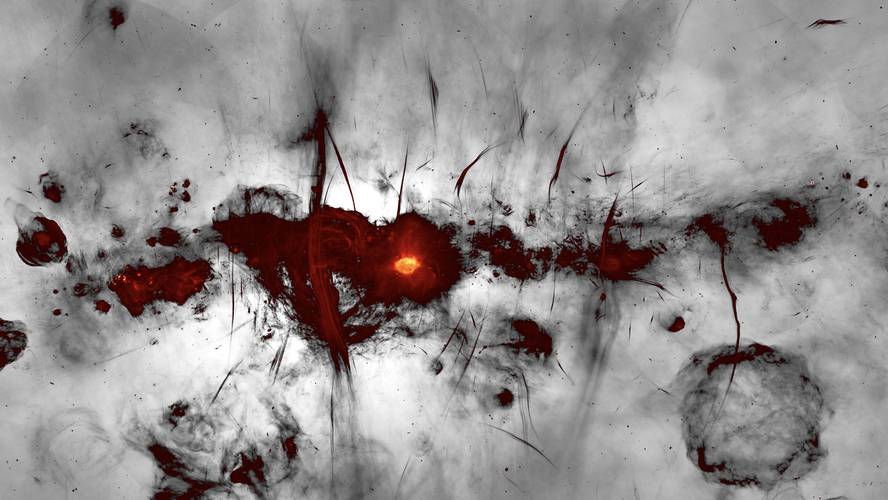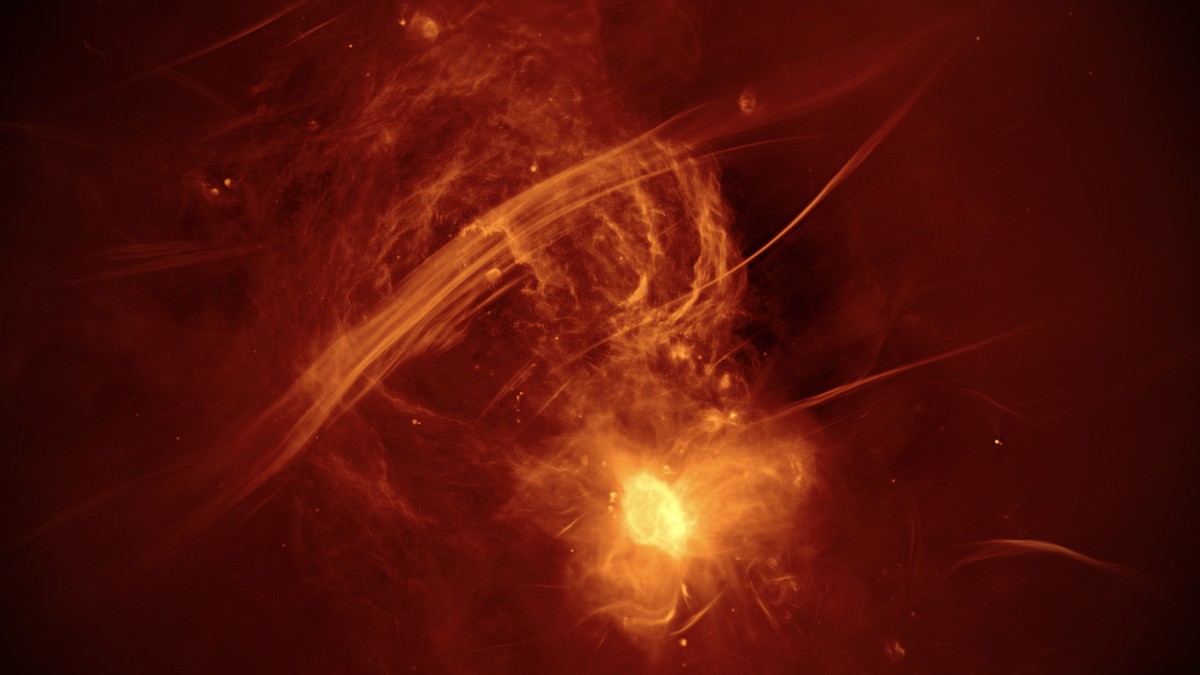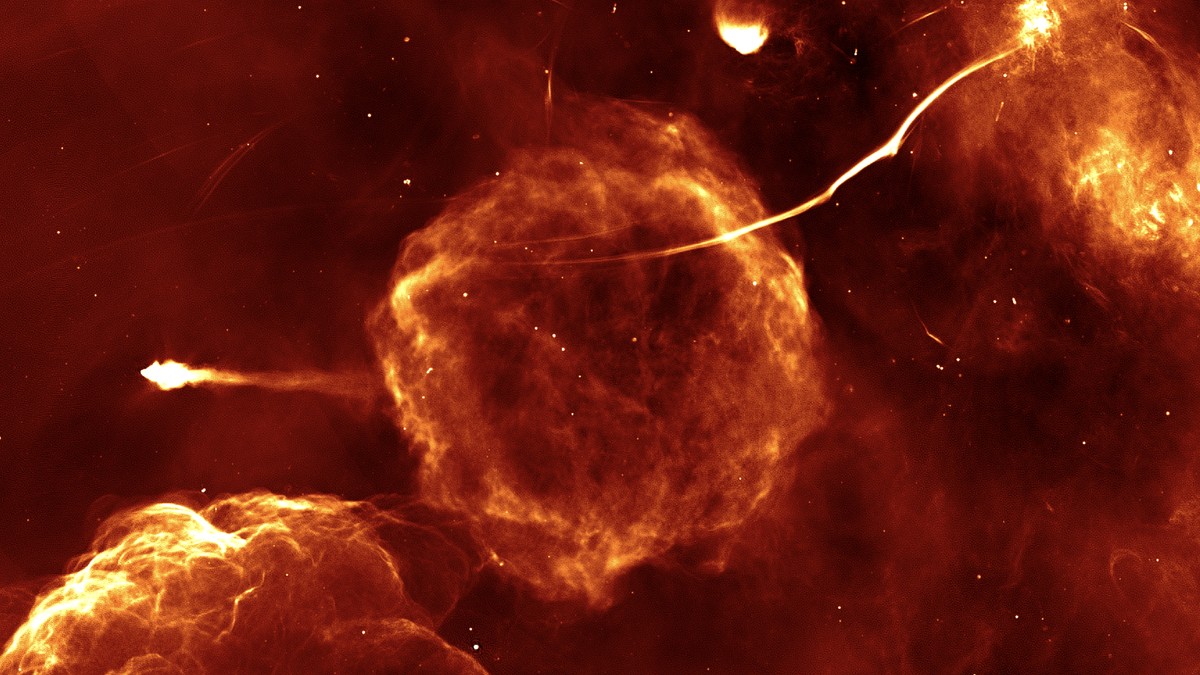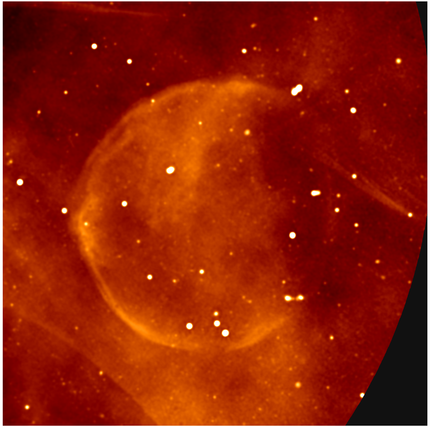The heart of the Milky Way, closely
At the African observatory SARAO, they've gotten the most beautiful and representative picture of the history of our galaxy. Accustomed to seeing the distant images of galaxies, it is surprising to see that in the heart of the Milky Way there is such an electrical activity. The electric storms illuminate the center of the galaxy: you see the stars that explode and die; the matter that expands through those explosions; the stars that are born… Also appears the supermassive black hole in the center of the galaxy: Sagittarius A, with a mass of 4 million stars of the Sun. And perhaps most especially, the long filaments of energy. These are fibers of 100 years of light length. Scientists first saw it 35 years ago, but they still don't understand how they were born.
The new image has been obtained by the new MeerKAT radio telescope, from the SARAO viewpoint in South Africa. Visible light telescopes are not able to detect many of the structures of the Milky Way, as they are presented with many dark areas due to cosmic dust clouds. However, radio waves can cross dust clouds and have allowed us to see the heart of the galaxy closely.
MeerKAT is a highly sensitive radio telescope: It has 64 antennas scattered across a desert in South Africa. They have needed twenty long observations and three years of work to get the picture. International Research Group - has worked on data processing.
In the image obtained there is only one area of the Milky Way, the heart of the galaxy and the most active area. The size of the image has been 1,000 light years. Because the galaxy has a diameter of 100,000 years of light, a small field. However, researchers point out that the image offers great scientific possibilities. They believe it will be beneficial to the astronomical community and will henceforth give access to meaningful information.
The mysterious energy filaments are the most striking. They're shown in the image below. They're part of a massive 1,000 year light energy bubble that smacks of the supermassive black hole Sagittarius A. These are long, parallel, twisted fibers that have never been seen so accurately. The new image of the galaxy has received several groups of filaments, so researchers believe it will allow to investigate its characteristics.
In this other area the cloud known as G359.1-0.5 appears. They're brilliant remains of a supernova explosion. And on the left, the so-called Mouse, a pulsar created in the supernova but extracted from it. On the right, Snake, the longest known energy filament:
They have also seen the remains of a spherical and almost perfect supernova in the heart of the galaxy, which has appeared on the edge of the MeerKAT mosaic (in the image on the right). In the image there are many other energy points, many of them supermassive black holes located in the center of other galaxies away from our galaxy. On the right of the image you see an unknown object that has left a luminous tail. Researchers believe it's a fast-moving object.
The Astrophysical Journal has published the work done thanks to the MeerKAT radio telescope. MeerKAT is the background to an even larger radio telescope. Square Kilometer Array will be built in the next decade, with more antennas, which will be the most powerful telescope on Earth.









